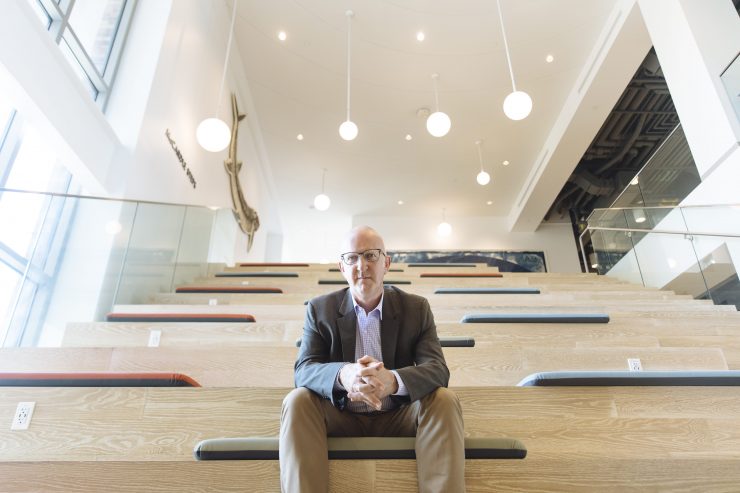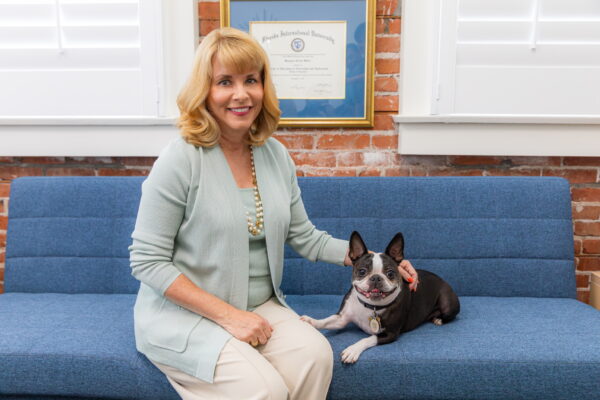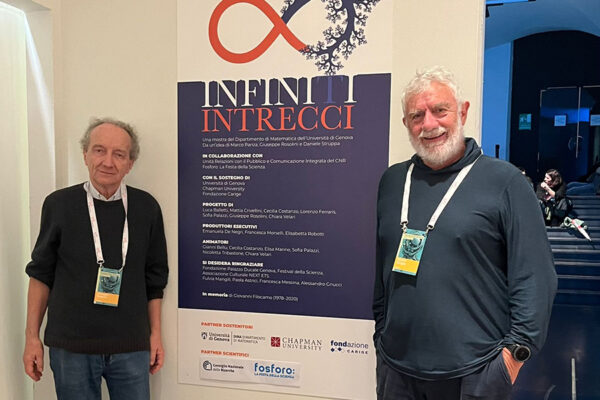Each year, about 2.8 million Americans develop bacterial infections that resist antibiotics treatments. About 35,000 of those patients die – globally the mortality figure is 700,000. Projections are that by 2050, 10 million people will die every year due to antimicrobial resistance, making this one of the world’s biggest threats to health, food security and development.
Research scientists at Chapman University have seen the daunting numbers from the U.S. Centers for Disease Control and Prevention, motivating them to pursue breakthroughs in the labs of the university’s Keck Center for Science and Engineering and the Rinker Health Science Campus in Irvine.
Exploring How Cells Adapt to Unique Stresses
Joining the overall Chapman team working to combat antibiotic resistance is Michael Ibba, Ph.D., a microbiologist and the new dean of Chapman University’s Schmid College of Science and Technology. Ibba arrived at Chapman University this summer from Ohio State University, where he chaired the Department of Microbiology and led a research lab that is moving to Chapman.
He and his team will continue work Ibba started two decades ago, exploring molecular mechanisms and how cells adapt to different stresses. Included in those stresses is the challenge faced by bacteria when confronted with an antibiotic sent to destroy them.
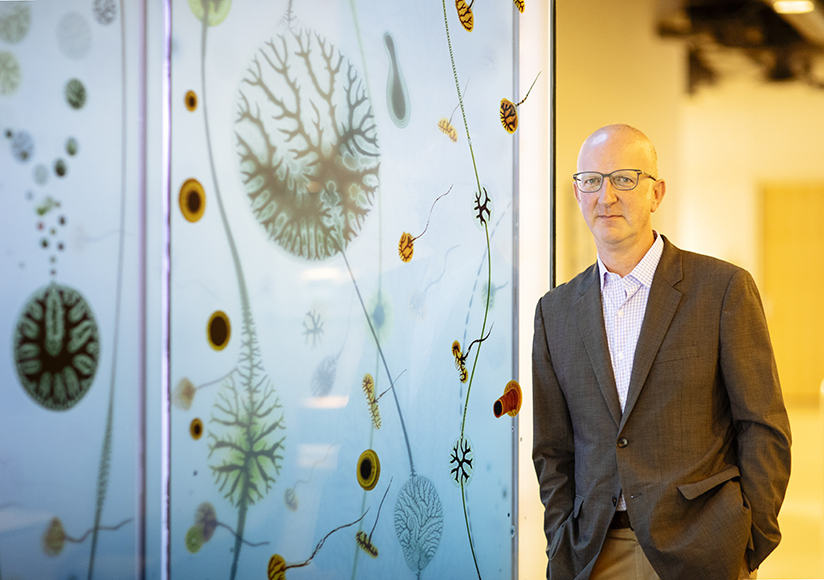
“Like any other evolutionary process, if you put a challenge in front of cells, it’s adapt or die,” says Ibba, who is also associate director of the Infectious Diseases Institute and co-director of the National Institutes of Health’s Cellular, Molecular, and Biochemical Sciences Training Program. “That’s why when you look at a prescription, it says to make sure you take the full course of the antibiotic.”
Funded by grants from the National Science Foundation, Ibba’s research has yielded many insights, including nuances in the behavior of different populations of bacteria.
“Some cells see antibiotics and go to sleep – basically they wait for better times to come,” he says. “This response is known as persistence. If new antibiotics just kill cells that are rapidly growing, the persistent cells will re-emerge.”
As he settles into his new role as dean of Schmid College, Ibba is also eager to get his lab up and running in Chapman’s 2-year-old Keck Center for Science and Engineering, a 140,000-square-foot facility he calls “stunning.” In addition, he’s excited to explore opportunities for collaboration with colleagues in the School of Pharmacy.
“I see great potential for partnerships,” Ibba says.
Developing New Antimicrobials
At the Chapman University School of Pharmacy, Keykavous Parang, Pharm.D., Ph.D., works alongside his colleague, Rakesh Tiwari, Ph.D., in the lab they share. The team also includes Jason Yamaki, Pharm.D., Ph.D., who works with patients fighting bacterial infections.
Collaboration is critical, Parang says.
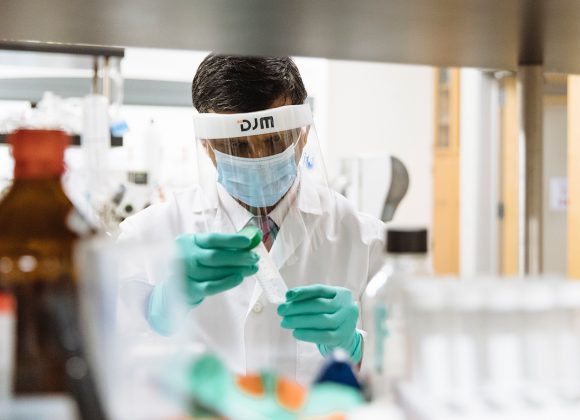
“I’m a medicinal chemist who can synthesize a lot of active antibacterial agents, but I benefit greatly from having an infectious disease expert to evaluate further the active compounds developed at my laboratory in the preclinical and clinical setting,” he says.
Team science helps promising research projects escape what Parang calls “the valley of death.”
“You can make a lot of active compounds, but if circumstances aren’t there for strong partnership, you won’t be able to make an impact with them,” he says, noting that the chain extends to include pharmaceutical industry funding and marketing support. “There’s a link between the team approach and successful opportunities for impact.”
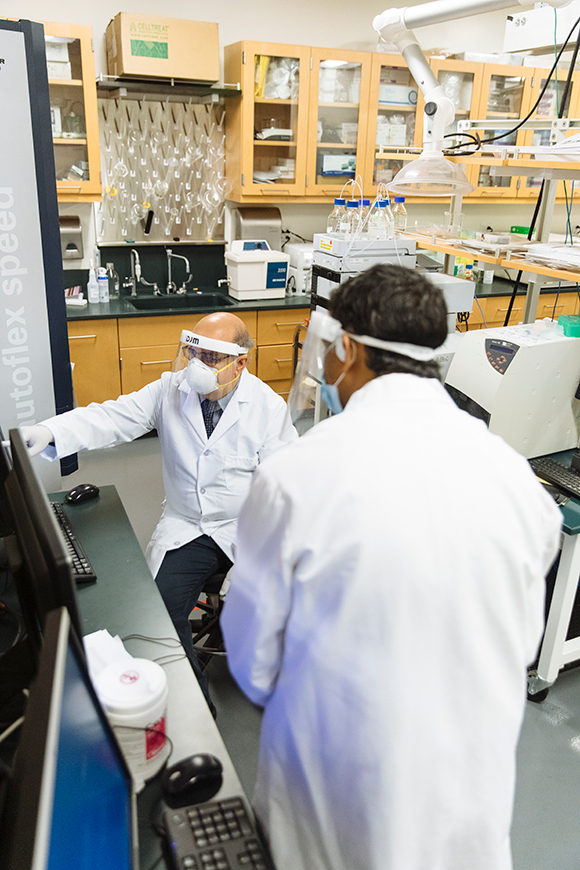
Potential is turning to progress as the team investigates a new class of antimicrobial agents. This burgeoning area of research is based on peptides, short strings of amino acids with an ability to destroy microbes. They have developed a large library of cyclic antimicrobial peptides (AMPs) that have shown promising activity against several multidrug-resistant bacteria when used alone or in combination with other antibiotics. Several lead compounds are being evaluated in animal models.
AMPs show promise in countering antibacterial resistance because of their broad-spectrum activities as well as their resilience and stability. They also offer reduced toxicity to host cells. In other words, there’s hope they can be programmed to kill the bad cells and keep the good.
The latest studies from the labs of Parang and Tiwari feature their work on new compounds that include synthesized peptides. The options they prioritize are active against Gram-positive- and Gram-negative-resistant bacterial pathogens and bacterial biofilm production, Tiwari says.
The peptides leak the membrane of bacteria.
“If the peptide can disintegrate the membrane, the bacteria will die,” Tiwari says. “Resistance to these unique peptides takes lots of layers of adaptation, and that can take multiple years, as opposed to regular antibiotics.”
Using Peptides in Combination with Existing Antibiotics
Students will continue to play important roles as the researchers take the next steps with their peptide platform.
“We’ll be looking at synergistic activity with other antibiotics and antivirals,” Parang says. “With a combination of antibiotics, the bacteria have less chance to retain resistance; we can target different events in the life cycle of the bacteria. If they have resistance to one compound, they may still be sensitive to another.”
By early 2021, the Chapman researchers hope to have filed an Investigative New Drug application with the Food and Drug Administration for human trials.
“One interesting aspect is that while we have been targeting bacteria, some of the peptides are active against coronavirus because of their antiviral properties,” Parang says. “That’s another avenue we are pursuing.”
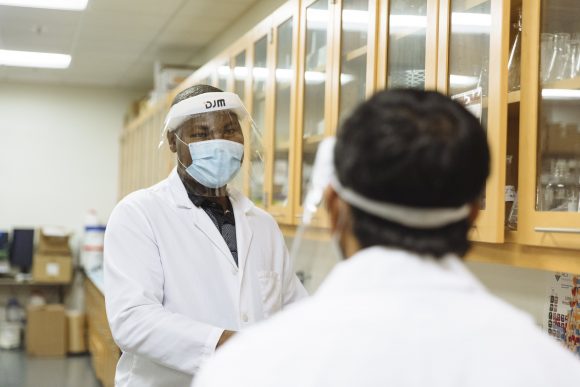
These days, research labs like the ones on Chapman’s Rinker Health Science Campus are more important than ever. Because of the high costs of shepherding new antibiotics from lab to market and low profit margins as patients were treated quickly, some pharmaceutical companies abandoned developing new antibacterial agents in the 1980s, Parang says.
But that’s changing.
“Large and small pharmaceutical companies are coming back to the effort because of the scale of the problem,” he says. “They know there will be a huge market priority in the coming years.”
Research by Parang and Tiwari has received funding from AJK Pharmaceuticals, but the pair are pursuing further support as they prepare for the possibility of navigating multiple phases of trials.
All roads lead them back to the benefits of collaboration.
“More resources and more expertise,” Parang says. “Partnerships bring the armaments that advance the science and move projects forward.”
